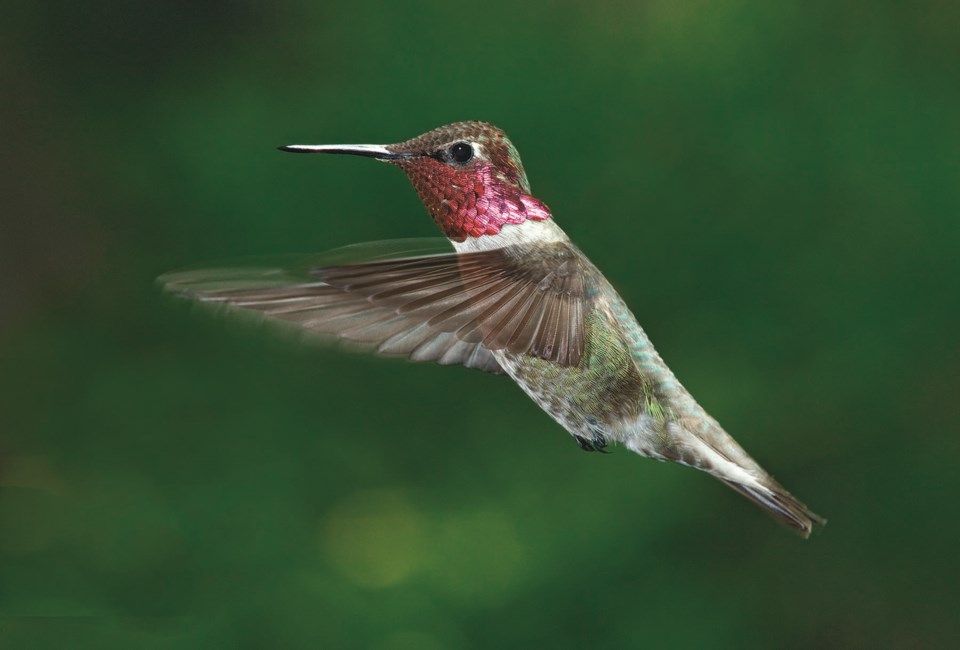Five species of hummingbirds have been recorded on the Sunshine Coast, with only two being regular. Rufous hummers were originally our only species, present from late March to late August, before returning to winter in Mexico. Beginning in the 1970s, Anna’s hummingbird colonized our area, as it expanded its range along the Pacific coast from California. It has been a spectacular colonization, as the species is now an abundant year-round resident, and found from sea-level gardens to high elevation clearcuts. Calliope hummingbird is a summer visitor to the Okanagan and has strayed westward in migration and been recorded in our area eight times. Costa’s hummingbird has strayed northward to the Sunshine Coast from southern deserts and been recorded six times.
The fifth species is Xantus’s hummingbird, which created one of the great events in Canadian ornithology, when it appeared at Lloyd and Gerrie Patterson’s feeder in the Bonniebrook area of Gibsons on Nov. 16, 1997. The species is normally a sedentary species in Baja California and has only rarely strayed even to southern California. How and why it ever appeared in Gibsons in November is a mystery. The bird stayed at Gerrie’s feeder for almost 10 months, with the last sighting on Sept. 21, 1998. The bird was a sensation among North American birders, and they flocked to Gerrie’s garden from all over the continent. Gerrie recorded 1,500 visitors in her guestbook.
There are 375 species of hummers in the world, all confined to the Americas, but occupying every conceivable habitat. Twenty-one species are endangered or critically endangered, with half of all species declining. In many ways, hummers represent evolution gone wild, with male birds displaying fantastically exotic plumages and dazzling iridescent colours. Hummingbirds range in size from the smallest bird in the world, the bee hummingbird, weighing less than two grams, to the giant hummingbird. They feed on nectar and small insects. They have the highest metabolic rate of all animals, and their wings can beat at one hundred beats per second. To survive cold temperatures, they can enter a state of torpor, when their metabolism declines to 1/15th of normal.
If hummers have exotic plumages, their names are equally stunning. Perhaps they were conceived by Coleridge during an opium dream. One’s imagination can only run riot when confronted with names such as purple-crowned fairy, tourmaline sunangel, shining sunbeam, sapphire-spangled emerald, adorable coquette and booted raquet-tail. Even these names do not do justice to the reality of these living jewels.
To report your sightings or questions contact me at [email protected] or 604-885-5539. Good Birding.



